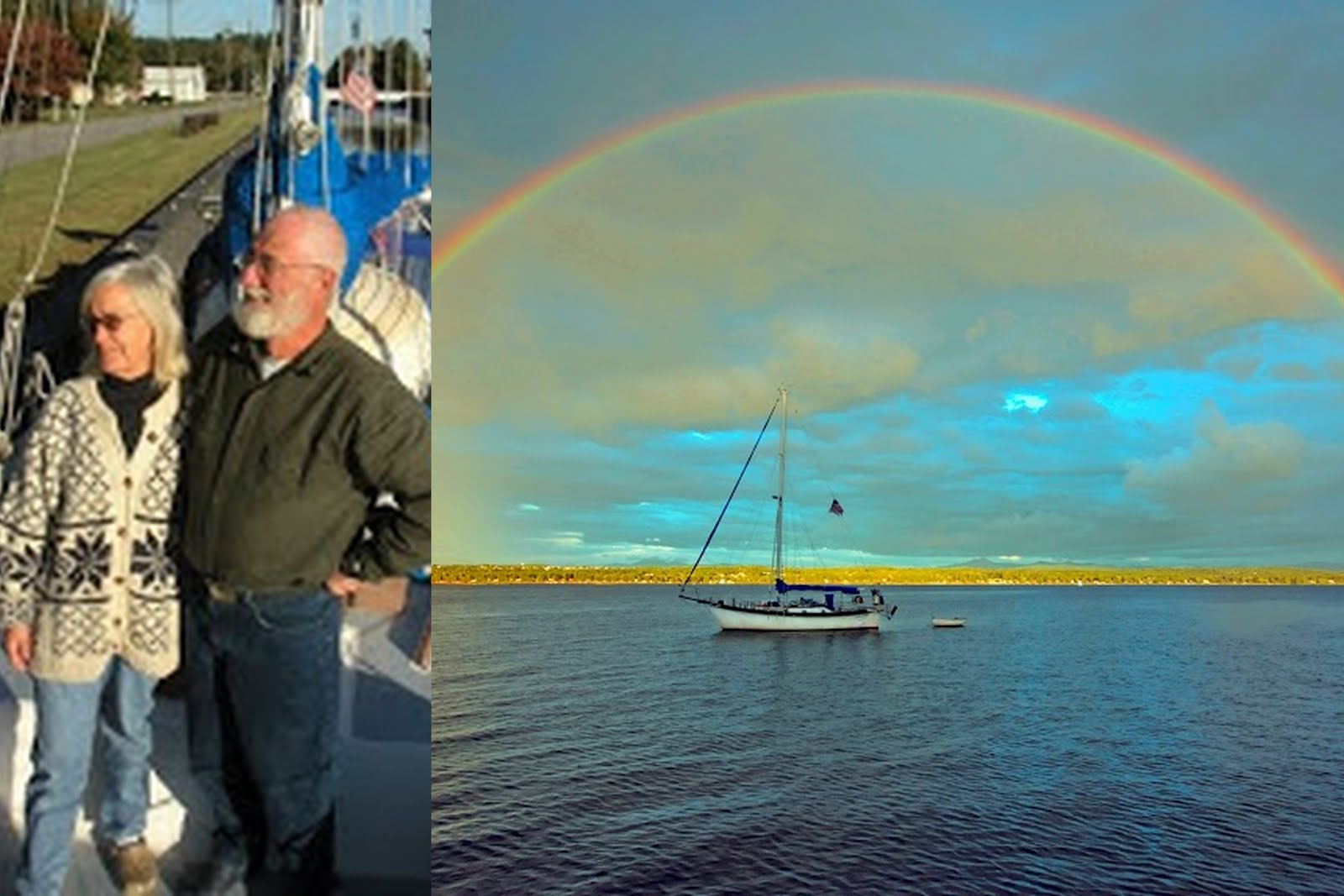44 13.82 N 073 20.60
I've written before about our sandbox -- the region from 25 North to 45 North within which we migrate in search of nice weather. It may surprise you to hear this, but almost all of our offshore cruising in that sandbox is in shallow waters above the continental shelf. Indeed, except for a deep trench near Miami, the continental shelf along the US East Coast is hundreds of miles wide and almost all less than 100 feet deep. As we sail offshore north and south we are almost always in 60-90 feet of water.
Now consider Lake Champlain. Most of the lake is more than 200 feet deep. Around here it is 300-400 feet deep. Combine that with the 95 foot elevation of the surface of the lake, and you see that most of the lake bottom is not only below sea level, but it is below the continental shelf level. Underneath our keel, the sea bottom is closest to the center of the earth here on Champlain, than on any other place from Maine to Florida.
To be sure, that trench off Miami is plenty deep, and in the Gulf of Mexico we've sailed over 12000 foot deep trenches. Still, those are not the places we do most of our cruising.
I've often wondered why and how Champlain came to be. It is sandwiched between two ancient mountain ranges, the Adirondacks, and the Green Mountains. I understand that the difference in age of the two ranges is about one billion years. Presumably, both ranges were formed when near the edge of a tectonic plate and involved collisions or subduction with another plate. Is Champlain the remnant of such a plate boundary? Was it carved so deep by the glaciers? Which plates collided when to form the mountains? Are the two mountain ranges parts of different plates or the result of a fold in the North American plate?
I've read three books so far on Champlain and the geology of the region and I still don't have a clear answers to those questions.
At one point in the past, Champlain was sea bottom, part of a vast bay extending down from the Newfoundland direction. I do not know if that was because sea levels were higher or land levels were lower. At another time, Champlain was also part of a vast fresh water lake of glacial melt water. At some point in the near future, it will rise high enough to drain south into the Hudson as well as north into the Saint Lawrence.
I've read three books so far on Champlain and the geology of the region and I still don't have a clear answers to those questions.
At one point in the past, Champlain was sea bottom, part of a vast bay extending down from the Newfoundland direction. I do not know if that was because sea levels were higher or land levels were lower. At another time, Champlain was also part of a vast fresh water lake of glacial melt water. At some point in the near future, it will rise high enough to drain south into the Hudson as well as north into the Saint Lawrence.






Champ, Lake Champlain's monster, is said to be a Plesiosaur. Plesiosaurs have been sighted on many deep fresh water lakes, including Loch Ness.
ReplyDeletePlesiosaurs hunt at dusk and dawn, and during a full moon. Have you noticed that all the waterfowl get off the lake at night? On the Sacandaga, they go out on the water to escape predators. On Champlain, the predator is in the water.